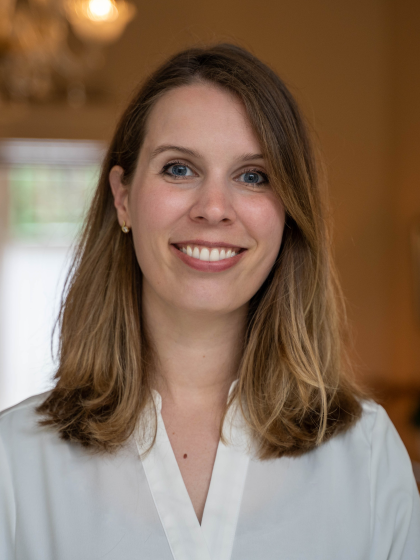E.F. (Esther) van der Hoorn, MA

My PhD project focuses on the works of the Dutch 17th-century silversmiths Paulus and Adam van Vianen. I aim to analyze the material-technical properties and iconography of these works and to situate them within the Van Vianens' cultural-historical and artistic context, so as to offer an interpretation of the silversmiths' artistic practice and the idiom that they developed, so-called kwab. This research project was initially devised as part of the larger project 'Rethinking Early Modern Media' at the Department of History of Art at the University of Groningen, set up by former Rosalind Franklin Fellow, Dr. Nadia Baadj.
Rethinking Early Modern Media
While issues of iconography, and more recently, materiality, are central to art-historical inquiry, how medium matters is often overlooked. Particularly in regards to the early modern period, the classification of media, their relationship to their constituent materials and to one another, and the specific ways in which they embody and transmit meaning is taken for granted or viewed in anachronistic terms. Museums and scholarship frequently reinforce modern hierarchies, for example privileging painting over the decorative arts, and create overly rigid categories that fail to account for combinatory media such as altarpieces, automata, manuscripts, and cabinets.
This project asks how we might understand early modern images and material artifacts differently if we decouple them from traditional media-specific narratives. It proposes to reconsider in historical terms how the meaning and function of various early modern media (e.g. prints, oil paintings, watercolors, frescoes, sculpture, furniture, altarpieces, textiles, metalwork, ceramics, stained glass, architecture, waterworks, gardens, paper cut-outs, ephemera) were linked to their form and aesthetic properties. Furthermore, it seeks to develop a more concrete understanding of the relationship between media and their materials: by what means were the latter transformed into the former, which technological and artisanal processes were involved, and how can we approach the wide range of multimedia objects (combining multiple materials and/or media) produced in this period?
In addition to investigating the origins, mobility, transgressions, and agency of media in relation to their cultural social, political, religious, and economic circumstances, the following key questions are central to this project:
(1) how were media classified and defined, especially in relation to one another? What kinds of categories existed and how rigid/flexible were they?
(2) how did various media embody, mediate, and generate information/knowledge/arguments differently?
(3) how can a historical understanding of media help us to reevaluate critical issues associated with early modern artistic practice (e.g. collaboration, repetition, imitation, invention, hybridity, ornament)?
| Laatst gewijzigd: | 29 juni 2023 07:48 |
